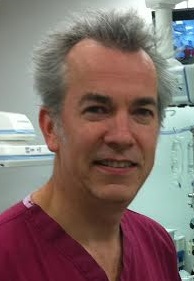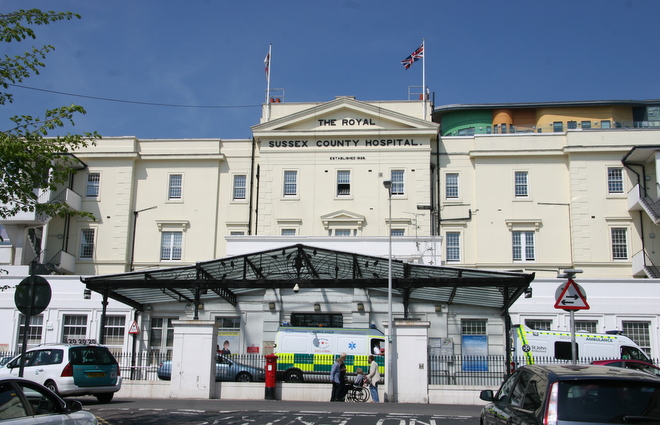Cardiologists at a Brighton hospital have performed a “world first” heart procedure which saved the life of a patient.
Michael Amos, 67, became the first person to have a new extra-large stent inserted into his heart at the Royal Sussex County Hospital after he suffered a cardiac arrest at his home.
Stents are tubes made of flexible wire that are placed in blocked arteries to open them up and let blood flow into the heart.
Those used for heart procedures usually expand to 4mm but the new one used for Mr Amos can go to 5.5mm.
This gives patients who have blocked larger arteries in their heart a better chance of survival.
Mr Amos was in a critical condition when he arrived at the Royal Sussex and, according to doctors, had only a 20 per cent chance of survival before the operation.
He said: “I would be dead now without it and I am extremely grateful to the doctors. Luckily I was in the right place at the right time.”
Consultant cardiologist David Hildick-Smith, who performed the operation along with consultant cardiologist James Cockburn, said: “We had originally planned to use the stent on another patient and it turned out on the day that it was not possible but, as luck would have it, Mr Amos came in to us at exactly the same time so we decided to use it with him instead as he was a suitable patient.
“He was very ill and had a condition that about eight out of ten people do not survive so he was very much in the right place at the right time.
“The stent is unique because no other stents of this kind are made above 4mm in diameter and yet the left main stem artery may be up to 5.5mm in diameter.
“This means we have previously had to use stents on these patients which are either too small or we’ve had to overstretch the stents.
“The new stent will expand to up to 5.5mm so it is a significant new advance and is hugely beneficial to patients such as Mr Amos.
“We would only use a stent of this kind on around 1 per cent of cases but it gives those patients a stent that is better suited for them and means we can use it without having to worry about whether it will be wide enough.”

Brighton and Sussex University Hospitals (BSUH) – the trust that runs the Royal Sussex – became the first to use the new stent as part of a European study. Dr Hildick-Smith is the study’s principal investigator.
The stent is called the Onyx XL and is known medically as a “drug eluting” stent because it is covered in a drug to stop the body rejecting it.
Dr Hildick-Smith said: “It is very exciting for us to be asked to be the first centre in the world to implant the stent.
“The company that makes it even flew an engineer from America to be with us for the implant.
“It is a privilege for us to be using it and there is a huge sense of achievement for the trust.”
Mr Amos needed the emergency procedure after collapsing at his home in Smallfield, near Gatwick.
His wife Pam gave him CPR with the help of her neighbours and he was first taken to East Surrey Hospital to be stabilised before being transferred to Brighton for the operation.

Pam said: “I heard a crash in the bathroom and went to see what had happened and found him face down on the floor, gasping for breath.
“I called the ambulance and I am a first aider at work so I know what to do but I couldn’t get him on to his back to start the CPR and I had to get my neighbours to help me.
“When we got back he had actually died, he was not breathing and his face was blue.
“We started CPR and thankfully there was a gasp and he started breathing.
“The ambulance arrived and they took over from there and were amazing.
“We were so lucky that he was able to go to Brighton and have the procedure and we feel so fortunate that he was there.
“What they did was incredible, it saved his life and we cannot thank them enough.”







